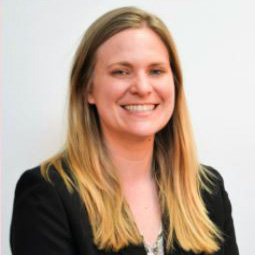
Prepare for College - 12th Grade
It’s easy to think of senior year as “the end.” And sure, it is the end of high school. But once Graduation Day is over, you’ll already be starting something new. Your senior year is when you get the chance to finalize what that will be.
So get ready. Fill out the applications. Visit all the places. Talk to everyone you need to talk to. Counselors. Professors. Financial Aid officers. Because before you know it, the end of high school will be here. Where will you be going next?
The Full Package
While standardized tests are becoming less “standard,” many colleges still do require the SAT or ACT as part of the application process. Check to see if the schools you’re interested in require them. If so and you haven’t taken them yet — or want to take it again — sign up!
One of your biggest champions in the college selection process will be your school counselor. They can help you figure out what careers interest you, or which majors might be (or might not be) a good fit. This will help you narrow down which schools are right for you.
On top of that, once you get into the application process, you may need their help pulling your high school transcripts — or giving your full application a second pair of eyes.
Set up a meeting with them to discuss your options in the fall, and keep checking in with them throughout the course of the year.
Depending on where you are applying, you may need a number of things to complete your application. This could include:
- A letter of recommendation
- A college essay
- A resume
Don’t let these be an afterthought! They are very important to letting colleges really get to know you. So make sure they shine and tell your story.
Your senior year is your last chance to show colleges who you are — what you like, what drives you, and where you place your priorities. Actions speak louder than words, so take some time to get involved somewhere — volunteering, athletics, an academic club — to show potential colleges some of the things that make you, you.
One note about this: make sure your involvement is genuine. Admissions professionals can figure out when you’re padding your resume and when you’re participating in something because it’s a true priority for you. So pick something that inspires you!
Worth The Time and Money
The Next Step
Your Apply Montana application automatically signs you up to apply to all 16 schools in the MUS system. As a Montana resident, your application is also FREE.Also, keep an eye out for College Application Week. This is a week each fall where high schools across the state prioritize setting aside time during the school day to help students fill out their college and financial aid applications.
Once you hear back from all the schools you applied to, you’ll have to let them all know your decision! Take the following steps to make your decision final. Then you can focus on the really fun stuff — actually going to school!
- Submit your acceptance form to the school you want to attend
- Make your deposit
- Watch your mail for information about how to register, arrange housing, orientation, etc.
- Decline offers received from other schools
You’ll have a lot going on when you arrive at school in the fall, so do what you can to prepare yourself before you begin.
Dollars & Sense
By your senior year, you probably have a decent idea how much schools generally cost. As you prepare to apply for financial aid, you’ll want to make sure you have all your numbers lined up. Find out the cost of tuition, any fees involved — and don’t forget books and, if you are living on campus, room and board.
This is possibly the most involved — and most important! — part of the application process for many students. Not only is there a lot of documentation involved, but you’ll need to include your parents, who need to provide critical information to be eligible for financial aid. FAFSA opens up for applications on October 1.
Some things to keep in mind:
- FAFSA has several helpful videos on its YouTube channel. Watch those before diving in.
- Studentaid.gov has a good timeline of specific items you can keep in mind at particular points throughout the year.
We have a whole section of our site dedicated to financial aid. Check it out.
Beyond FAFSA, private and public scholarships and grants can be a great source of financial aid. Unlike federal loans, scholarships and grants, don’t need to be paid back, truly reducing the cost of your education. Make sure you do a thorough search of scholarships you could be eligible for — and apply!
With all of your financial offers in hand, you’ll need to compare the aid packages at different schools against one another. Then, figure out which one works best for you.
Before you attend, you’ll want to connect with the financial aid director at the school you are attending in the fall. He or she can walk you through any final steps you’ll need to keep in mind to make sure you’re ready to attend in the fall. Don’t forget to sign any award letters before their deadlines!







